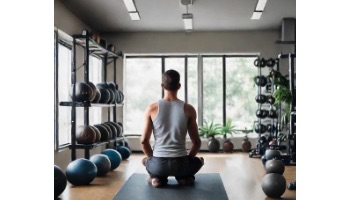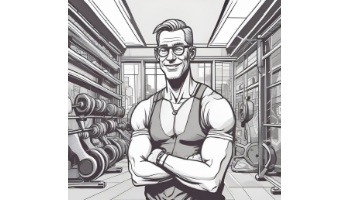The same way a car is designed to roll on wheels, the human body is designed to create certain movements. These five fundamental movements form the basis for your strongest, most agile, and healthiest self.
Five Fundamental Movements
1. The Squat: Squatting is a natural resting position for the human 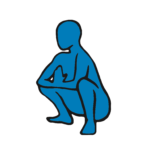 body. It requires full range of motion at all the major segments and joints of the body, as well as adequate stability and motor control. A good squat position has the hips below the knees, the feet flat on the floor, the knees in line with the feet, and an upright trunk with the eyes facing forward and a flat back. Can you do it?
body. It requires full range of motion at all the major segments and joints of the body, as well as adequate stability and motor control. A good squat position has the hips below the knees, the feet flat on the floor, the knees in line with the feet, and an upright trunk with the eyes facing forward and a flat back. Can you do it?
VIDEO: How To Do Squats
2. The Hip Hinge: Hip hinging is bending forward  without rounding the spine. The hip joint is large, stable, and powerful and is meant to bear great stress. Perfecting this fundamental movement can help you use these powerful joints and protect your back and knees from overload and injury.
without rounding the spine. The hip joint is large, stable, and powerful and is meant to bear great stress. Perfecting this fundamental movement can help you use these powerful joints and protect your back and knees from overload and injury.
VIDEO: How To Hip Hinge
3. Upper Body Rotation: You need rotation at your upper body for 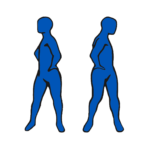 more than looking over your shoulder or swinging a club. It also plays an important part in walking and running. When you locomote, a complex sequence of moving parts (your arms and legs) rotate around your body’s center of gravity. Maintaing good rotation keeps the whole thing running smoothly, protecting all the joints involved.
more than looking over your shoulder or swinging a club. It also plays an important part in walking and running. When you locomote, a complex sequence of moving parts (your arms and legs) rotate around your body’s center of gravity. Maintaing good rotation keeps the whole thing running smoothly, protecting all the joints involved.
4. Scapulohumeral rhythm:  Your arms have a wide range of motion which allows you to reach in many directions. For that to work, your arms and shoulder blades need to move well and they need to move together! A great way to assess this is by having a look at your ability to reach overhead. Can you get your arms completely vertical while keeping the elbows straight and your neck relaxed? If not it is likely that the arm and the shoulder blade are not working well together.
Your arms have a wide range of motion which allows you to reach in many directions. For that to work, your arms and shoulder blades need to move well and they need to move together! A great way to assess this is by having a look at your ability to reach overhead. Can you get your arms completely vertical while keeping the elbows straight and your neck relaxed? If not it is likely that the arm and the shoulder blade are not working well together.
VIDEO: Basics Of The Overhead Position
VIDEO: Protraction, Retraction, And Other Movements Of The Scapula

5. Gait: We all walk, but we don’t all walk the same way. The pattern that gives your walk a particular characteristic is called gait. Gait is a little different than movements 1-4 in that it is actually the culmination of a well functioning body. In other words, joints that move well allow for smooth gait. That is why a gait assessment can be used to diagnose and treat musculoskeletal problems. Older individuals or injured people often display a noticeably altered gait such as shuffling or limping.
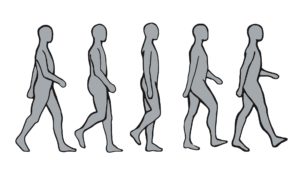
Fundamental Movement Protects Your Body
You are a complex structure with a lot of moving parts. When one area isn’t behaving, other areas have to take up the slack which can overstress muscles, tendons, and joints. That’s why poor movement can lead to annoying aches and pains, as well as to outright injury. Good movement patterns will boost your strength and athleticism while also reducing wear and tear on the body. With all this back, neck, shoulder, and knee pain around—and one of the world’s most expensive healthcare systems—who wouldn’t want that?

